Critically-endangered South American forests were man-made
A new manuscript published in Scientific Reports uses a multidisciplinary methodology to explore the relationship between past peoples and the distribution of Araucaria forests in the southern Brazilian highlands.
In the highlands of southern Brazil an anthropogenically driven expansion of forest occurred at the expense of grasslands between 1410 and 900 cal BP, coincident with a period of demographic and cultural change in the region. Previous studies have debated the relative contributions of increasing wetter and warmer climate conditions and human landscape modifications to forest expansion, but generally lacked high resolution proxies to measure these effects. We developed and tested a model of natural ecosystem distribution against vegetation histories, paleoclimate proxies, and the archaeological record to distinguish human from temperature and precipitation impacts on the distribution and expansion of Araucaria forests during the late Holocene. Carbon isotopes from soil profiles confirm that in spite of climatic fluctuations, vegetation was stable and forests were spatially limited to south-facing slopes in the absence of human inputs. In contrast, forest management strategies for the past 1400 years expanded this economically important forest beyond its natural geographic boundaries in areas of dense pre-Columbian occupation, suggesting that landscape modifications were linked to demographic and subsistence changes, the effects of which are still visible today.
Check out the full open access article here
https://www.nature.com/articles/s41598-018-24429-5
See news coverage here
https://www.independent.co.uk/environment/south-america-forest-indigenous-people-chile-brazil-argentina-a8356501.html
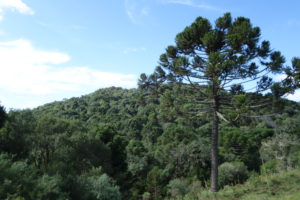
Publication – Moieties and Mounds
New article in Latin American Antiquity now available online (link below) discussing dualism at a mortuary site in Campo Belo, southern Brazilian Highlands.
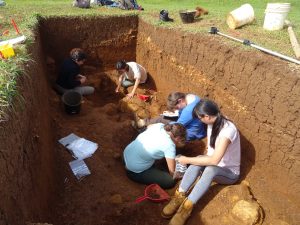
Excavation into the mound discovered a distinct spatial patterning to the cremation deposits that aligns with ancient and historic cosmological concepts and landscape management.
SAA 2017 – Vancouver
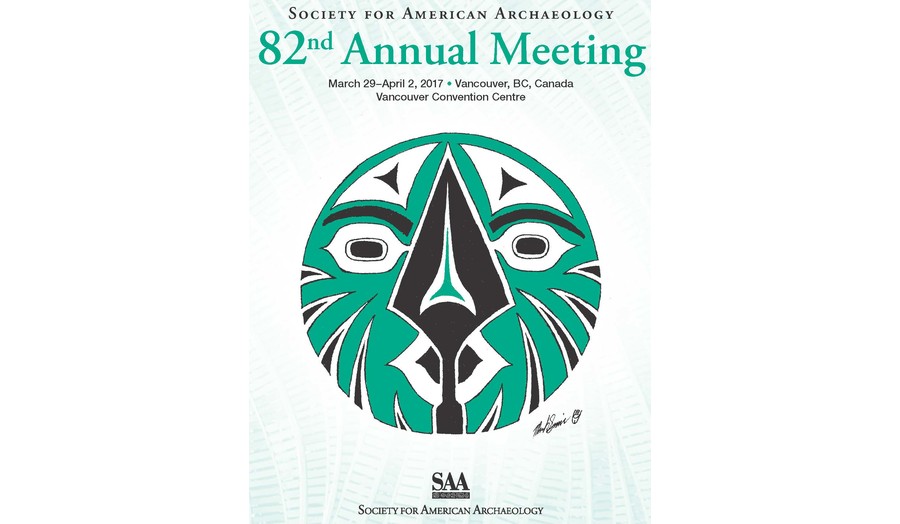
Je Landscapes was represented at the 2017 Society for American Archaeology conference in Vancouver.
Mark Robinson discussed the role of plants in southern proto-Je ritual, combining anthracology, with archaeology, ecology, and ethnography to identify and explore issues of plant selection and management.
In a session on Mortuary Practices and Funerary Archaeology, Priscilla Ulguim, reported on cremated remains in a paper titled: Fire and death: cremation as a ritualised funerary practice in the southern Brazilian Highlands.
The papers were well received and sparked long discussions after the session. We thank the organisers of the conference and the particular sessions for making the conference a great success.
Jê Landscapes in Lages
Master’s student Luísa d’Avila presented research from the project in Lages, Santa Catarina, Brazil, at the conference, “250 Anos da cidade do Lages: Encontro do Historia e Geographia” (250 years of the city of Lages: Meeting of history and geography).
Her talk, “Pesquisas Arquelógicas na Serra Catarinense: o projeto paisagens Jê do Sul do Brasil” (Archaeological research in the Santa Catarina highlands: Jê Landscapes of southern Brazil), presented an overview of the archaeology of the southern Brazilian highlands, with specific examples from recent research in Campo Belo do Sul and Pinhal da Serra. Luísa presented her ongoing Master’s research, discussing the development of a settlement model for predictive modelling, and its subsequent ground-truthing.

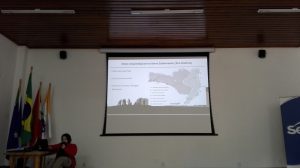
Exeter well represented at Enclosing Worlds conference
The conference brought together scholars from across the globe to discuss various aspects of enclosures from the archaeological world.
Jose Iriarte, Jonas Gregorio de Souza, and Mark Robinson enjoyed a great conference over the past week in Reguengos de Monsaraz, in southern Portugal (enclosingworlds.blogspot.co.uk).
Jose presented a broad discussion of the environmental and landscape context of the mound and enclosure architecture in the southern Brazilian Highlands in a paper titled “Sacred landscapes of the southern Brazilian highlands: Understanding southern proto-Jê mound and enclosure complexes”.
Mark explored how a nested dual social structure is manifest in the funerary landscapes, drawing from ethnohistoric accounts of the the Je moiety system in a paper titled, “Enclosed Dualism: Moieties and Mortuary Ritual in the Southern Brazilian Highlands”.
“The genesis of monuments: Resisting outsiders in the contested landscapes of southern Brazil”, by Jonas, presented data from the recent publication of the same name in the Journal of Anthropological Archaeology (De Souza et al. 2016).
We thank Antonio Valera and his teamfor organising a great conference
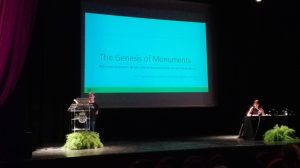
Jonas presenting
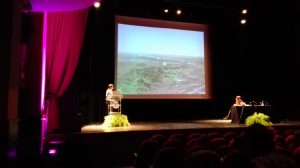
Jose presenting
Upcoming conference

Je Landscapes in Portugal.
Jose Iriarte, Mark Robinson, and Jonas Gregorio De Souza will be presenting research from southern Brazil at the Enclosing Worlds conference in Reguengos de Monsaraz, Portugal, in October.
The meeting provides an opportunity to share case studies of enclosures from across the globe to discuss the social implications and social roles of these architectural features and the organisation of space.
For more information visit: http://enclosingworlds.blogspot.co.uk/
Jê Landscapes of Southern Brazil | Privacy Policy
